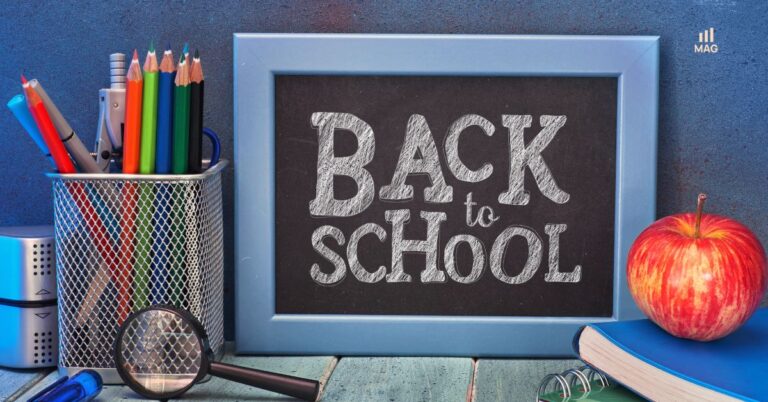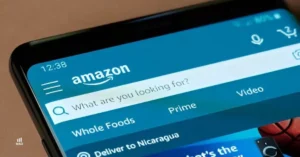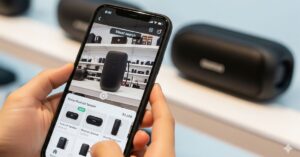
Back-to-school shopping has started earlier this year, with retailers like Amazon and Wayfair launching deals by Memorial Day to get ahead of peak demand.
The back-to-school shopping season, the second-largest sales driver of the year, is currently in full swing. Many Amazon sellers believe the back-to-school rush is only for brands selling pencils and backpacks.
This misconception causes them to stand still during the year’s second-biggest shopping event, allowing competitors in all categories from electronics to home goods to gain sales and improve their rankings.
Retailers Started Early as Back-to-School Season Blends with Summer Sales
USA Today"Contrary to popular belief, back-to-school sales aren't just reserved for, well, school-related deals."
According to Retail Brew, the back-to-school shopping season has shifted dramatically, now starting in early summer and serving as a key kickoff for fall and winter holiday sales. This change forces brands to adjust their strategies and prepare for a longer, more competitive selling period.
This year, major retailers like Amazon and Target launched sales events as early as Memorial Day weekend to begin the season. These were strategic moves designed to clear space for incoming fall inventory, not just typical clearance sales.
The timeline for shopper traffic has moved up significantly, with activity starting to build in June. The peak traffic period now typically runs from late June through mid-August, making right now a critical time for sellers.
This accelerated schedule, combined with factors like a temporary pause on tariffs, is causing brands to fast-track their strategies. Some companies are now sprinting to coordinate promotions and manufacturing to take full advantage of the season.
The fusion of this shopping period with Amazon Prime Day has become a pivotal event for many sellers. The back-to-school sales cycle often launches with Prime Day and continues for several weeks into the middle of August.
In response to the early start, brands are working urgently to ensure they have enough stock to meet demand. This has led to last-minute manufacturing orders to top off inventory levels ahead of key promotional deadlines.
This year’s back-to-school season is expected to be intensely value-focused. Experts anticipate that consumers will concentrate their spending where they can get the most value, a behavior already common within the Amazon ecosystem.
This focus on value means shoppers will likely prioritize essential items and products that can save them money over time. In response, some brands are planning to launch new, “stripped-down” products with even lower price points later in the year to meet this demand.
Data Confirms Early Start and Shifting Priorities for Shoppers
According to a press release from the National Retail Federation, consumer behavior for the back-to-school season shows significant shifts in timing and spending priorities. This data gives sellers a clear picture of what motivates shoppers and where they are spending their money right now.
A significant majority of consumers began their shopping early this year out of concern that prices will rise due to inflation and tariffs. As of early July, two-thirds of shoppers had already started their purchasing, which is the highest level recorded since 2018.
This early start does not mean shopping is complete, as most households still have at least half of their buying left to do. The main reasons for the delay are consumers waiting for the best deals or not yet knowing exactly what items are needed.
Major summer sales events play a crucial role in this extended shopping season. Four out of five shoppers planned their purchases around July retail events like Amazon Prime Day to find deals on items for the school year.
Spending Trends for K-12 Families
While families with students in elementary through high school plan to spend slightly less per household, overall spending is expected to rise to $39.4 billion. This increase is driven by more consumers purchasing items in key categories like apparel and electronics.
On average, K-12 shoppers are budgeting the following amounts:
- Electronics – $295.81
- Clothing and Accessories – $249.36
- Shoes – $169.13
- School Supplies – $143.77
Spending Trends for College Students
The back-to-college market is also expected to see total spending increase to $88.8 billion, even though individual spending has decreased slightly. This growth is largely attributed to spending from higher-income households, as lower-income families are pulling back on purchases.
The top five spending categories for college students and their families are:
- Electronics – $309.50
- Dorm or Apartment Furnishings – $191.39
- Clothing and Accessories – $166.07
- Food – $140.24
- Personal Care Items – $117.95
Online channels remain the most popular shopping destination for both K-12 and college shoppers. Following online stores, consumers turn to department stores and discount stores to complete their lists.
How Major Retailers Are Courting Back-to-School Shoppers
According to Fox40, major retailers across the country are offering significant deals and promotions to attract families during the peak back-to-school shopping season. These aggressive discounts span all major categories, from basic school supplies to high-end electronics and apparel.
This competitive environment shows that shoppers are actively being presented with compelling, value-driven offers. Understanding these promotions is key for Amazon sellers to gauge what they are up against.
The deals from key retailers highlight a market focused on deep savings:
Apple
The company is running its annual Education Store promotion through September 30. Eligible students, parents, and educators can receive a free accessory, valued up to $179, with the purchase of a qualifying Mac or iPad.
Walmart
The retailer has announced “rollbacks” on 14 of the most popular back-to-school items. Walmart is promoting that families can purchase a full set of supplies, a backpack, lunch, and an outfit for a total cost under $65.
Staples
The office supply store is featuring weekly deals and special discounts for teachers, including a 20 percent discount both online and in-store. Prices on essential supplies like notebooks, folders, and pencils range from as low as 25 cents to $1.99.
Gap
The clothing retailer is holding a major clearance event for kids and adults. Shoppers can find discounts ranging from 20 to 60 percent off on select clothing.
Nordstrom
The department store is including campus-related deals as part of its anniversary sale. However, these specific promotions are highly time-sensitive and are scheduled to end on August 3.
Nerdwallet"Shopping sales and using coupons are common ways back-to-school shoppers plan to save."
Actionable Marketing Tactics for a Competitive Season
According to marketing platform Omnisend, the most effective back-to-school campaigns connect parent needs with kid wants through strategic promotions. By understanding shopper psychology, sellers can implement proven tactics to drive sales during this peak period.
A successful approach often involves a combination of offers, content, and urgency. Omnisend highlights several key strategies that sellers can adapt for their own campaigns.
These proven tactics include:
Offer Themed Discounts and Bundles
Sellers can save parents time by bundling products into discounted kits, such as by grade level or subject. This tactic can also be used to position non-traditional items as school essentials, like a low-sugar drink brand that successfully marketed its products as a smart choice for lunchboxes.
Create Themed Shopping Sections
Organizing products into logical sections simplifies the shopping experience and turns frantic searches into quick checkouts. On Amazon, this can be achieved through well-structured Brand Stores or A+ Content layouts that guide parents to relevant products.
Share Useful Tips
Providing helpful content, such as lunch prep shortcuts or organization hacks, positions a brand as a useful resource. This content marketing approach builds trust and connects with consumers by solving their problems.
Reposition Products as Essentials
Brands can frame everyday items as necessary for school. For example, an essential oil company successfully created a “Study Buddy” collection, marketing aromatherapy as a tool to help students focus.
Promote Giveaways
Contests and giveaways can expand a brand’s reach through social sharing and help build an email list. This strategy appeals to parents looking to offset rising costs and builds goodwill.
Market Focus and Productivity
Products that help families manage the chaotic transition from summer to school routines are highly valuable. This includes marketing planners, meal prep tools, or even supplements as fuel for productivity.
Provide Free Shipping
Offering free delivery with a promotional code is a powerful way to reduce cart abandonment. This is especially effective for back-to-school, as parents are often buying in bulk and are sensitive to final checkout costs.
Use Urgency to Drive Sales
Creating genuine urgency with clear deadlines or limited stock messaging is highly effective. A message like “sale ends at midnight” motivates last-minute shoppers far more than vague “ending soon” notices.
Leverage On-Site Promotions
Using promotional tools like coupons and limited-time deals can capture shopper attention. These offers can highlight deals or remind returning visitors about items left in their cart.
Partnering with an Amazon agency ensures these back-to-school marketing tactics are implemented strategically and effectively, helping your brand stand out during peak season.
Social Native"Smart planning, aligned with regional schedules, is key to maximizing your sales during this busy time."






